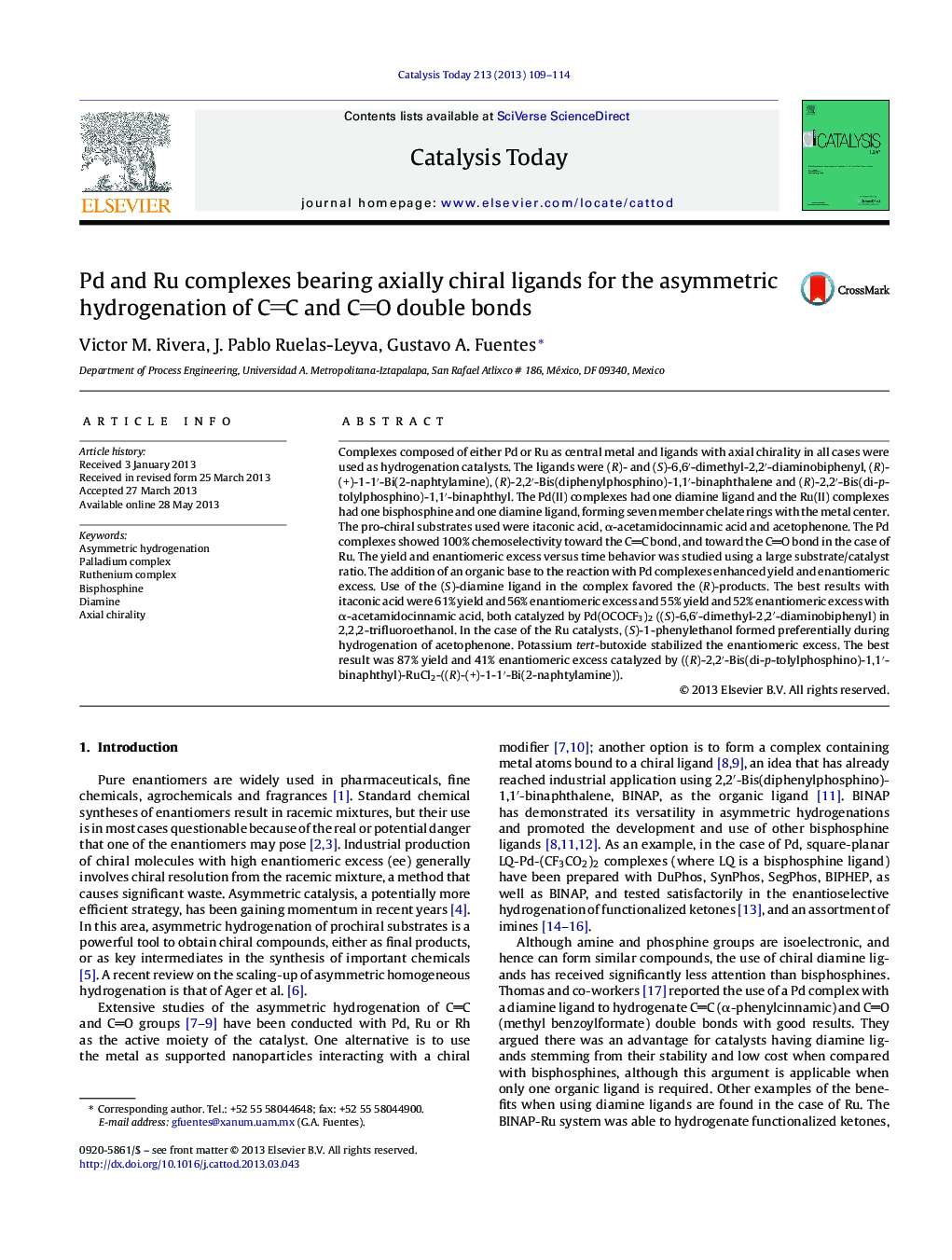| کد مقاله | کد نشریه | سال انتشار | مقاله انگلیسی | نسخه تمام متن |
|---|---|---|---|---|
| 54781 | 47026 | 2013 | 6 صفحه PDF | دانلود رایگان |

• Catalytic asymmetric hydrogenation of CC and CO double bonds.
• Designed Ru and Pd complexes with axially chiral ligands.
• Enantiomeric excess and yield followed in time.
• Additives promote either ee or activity.
Complexes composed of either Pd or Ru as central metal and ligands with axial chirality in all cases were used as hydrogenation catalysts. The ligands were (R)- and (S)-6,6′-dimethyl-2,2′-diaminobiphenyl, (R)-(+)-1-1′-Bi(2-naphtylamine), (R)-2,2′-Bis(diphenylphosphino)-1,1′-binaphthalene and (R)-2,2′-Bis(di-p-tolylphosphino)-1,1′-binaphthyl. The Pd(II) complexes had one diamine ligand and the Ru(II) complexes had one bisphosphine and one diamine ligand, forming seven member chelate rings with the metal center. The pro-chiral substrates used were itaconic acid, α-acetamidocinnamic acid and acetophenone. The Pd complexes showed 100% chemoselectivity toward the CC bond, and toward the CO bond in the case of Ru. The yield and enantiomeric excess versus time behavior was studied using a large substrate/catalyst ratio. The addition of an organic base to the reaction with Pd complexes enhanced yield and enantiomeric excess. Use of the (S)-diamine ligand in the complex favored the (R)-products. The best results with itaconic acid were 61% yield and 56% enantiomeric excess and 55% yield and 52% enantiomeric excess with α-acetamidocinnamic acid, both catalyzed by Pd(OCOCF3)2 ((S)-6,6′-dimethyl-2,2′-diaminobiphenyl) in 2,2,2-trifluoroethanol. In the case of the Ru catalysts, (S)-1-phenylethanol formed preferentially during hydrogenation of acetophenone. Potassium tert-butoxide stabilized the enantiomeric excess. The best result was 87% yield and 41% enantiomeric excess catalyzed by ((R)-2,2′-Bis(di-p-tolylphosphino)-1,1′-binaphthyl)-RuCl2-((R)-(+)-1-1′-Bi(2-naphtylamine)).
Figure optionsDownload high-quality image (110 K)Download as PowerPoint slide
Journal: Catalysis Today - Volume 213, 15 September 2013, Pages 109–114